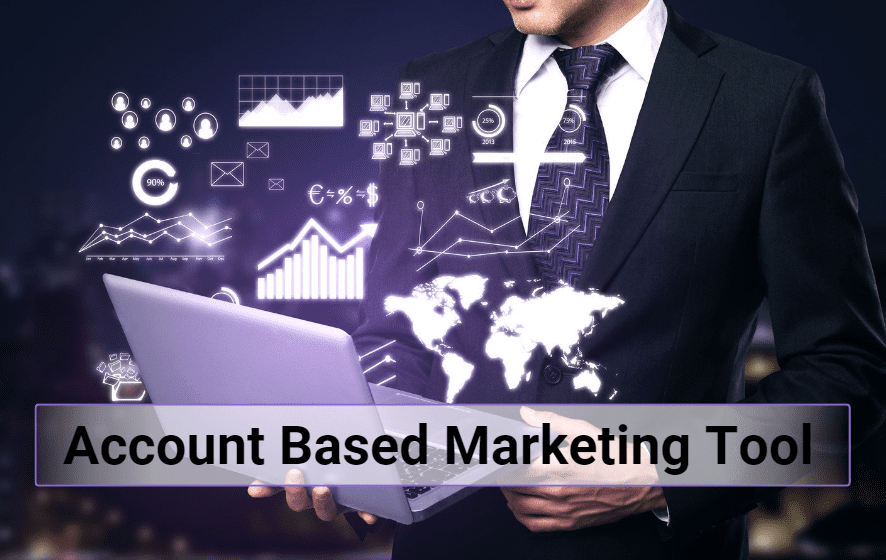Account-based marketing has emerged as an invaluable driver of top engagement and revenue in the changing landscape of B2B marketing. The essential ingredients to ABM success are provided by account-based marketing tools through precision targeting, personalized campaigns, and the effective conversion of high-value accounts.
This blog takes us through the basics of ABM, the fundamental features of ABM tools, top tools one can find on the market, and real-world success stories to surface the kind of transformative impact a good account based marketing tool can create.
Explain Account-Based Marketing (ABM)
In Account Based Marketing (ABM), a strategic approach developed specifically for B2B companies, the important part is the targeting and engagement of high-value accounts rather than rampant blanket marketing. An account based marketing tool would enable businesses to carry out highly personalized marketing directed at individual accounts while treating each targeted account as its very own market. This strategy underlines the importance of key decision-maker targeting in those accounts to develop meaningful and profitable relations.
Benefits of Account Based Marketing Tool(ABM)
- Higher ROI: ABM campaigns often give a much higher return on investment than broader marketing approaches. With the focus of budget and resources on the target of the most promising accounts, especially with an Account-Based Marketing Tool, a business can get better results at lower costs.
- Sales and Marketing Alignment: ABM requires a more vital collaboration between the sales and marketing teams, thereby encouraging better alignment. An appropriate Account-Based Marketing Tool supports this unified approach and ensures that both teams work toward common goals for enhanced practical marketing efforts.
- More Personalization: Account-based marketing allows for deep, personalized marketing strategies directed toward the particular needs and challenges of every targeted client account. Account based marketing tools allow so much strategy personalization that also dramatically increases the chances of lead engagement and following through.
- Efficient Resource Allocation: Companies will be able to properly allocate their resources in marketing by the concentration of marketing efforts to a small population with high value, using an Account-Based Marketing tool for a more substantial impact in campaigns and less waste.
- Improved Customer Experience: ABM strategies often result in improved customer experiences. Using an Account-Based Marketing Tool to push personalized bite-sized content to each targeted account shows the target audience that you understand their needs, which is helpful for better relationships with and loyalty from the customers.
Account Based Marketing Tool(ABM) Strategy and Approach

A successful ABM strategy can be implemented when a business adopts a structured approach through the use of an Account-Based Marketing Tool:
- Identify target accounts: Select high-value target accounts based on strategic criteria such as revenue potential, how your product or service fits with it, and the likelihood of success. An account based marketing tool can help to make this selection process.
- Create Account Insights: Gather information on in-depth target accounts, business problems, objectives, organization structure, and the decision-making process to help gather data using an Account-Based Marketing Tool.
- Run Tailored Campaigns: Design Marketing Campaigns uniquely for each target account. This includes Personalized Content, messaging, and Outreach Plan crafted to perfection through an Account-Based Marketing Tool.
- Multi-Channel Engagement: Use channels such as email, social media, direct mail, events, and targeted advertising for the highest penetration of a target account. An account based marketing tool can manage and coordinate these multi-channel efforts.
- Measure and Optimize: Monitor the progression of the performance of ABM campaigns, analyze data, and develop strategies that can make results better with the help of analytics using Account-Based Marketing Tools.
Account Based Marketing vs Traditional Marketing
Traditional marketing would typically focus on driving high-volume leads through general campaigns to reach maximum potential customers. In contrast, ABM targets a tiny and specific audience with highly personalized and targeted campaigns. On the contrary, traditional marketing metrics include lead volume and website traffic, whereas in ABM, there are account engagement and conversion rates and revenue from targeted accounts, which can be effectively measured using an account based marketing tool.
Key Features to Look for in an Effective Account-Based Marketing Tool
When selecting an account-based marketing tool, that along with helping you, can support your ABM strategy toward finally getting that business result you have been waiting for. Here are some key features:
-
Account Targeting
An ideal Account-Based Marketing Tool should offer precision in account targeting capabilities. From the set of features, it must qualify only high-value accounts based on their industry domain, company size, and revenue potential.
-
Lead Identification
Advanced lead identification capabilities can make an account based marketing tool even more potent in tracking and analyzing the behavior of prospects to surface decision-makers and essential influencers in the target accounts.
-
Personalized Content
Personalization is central to ABM, so an Account-Based Marketing Tool should offer functionalities that would enable one to quickly produce and deliver personalized content that will be related to the individual needs or issues of some target account.
-
Analytics and Reporting
Robust analytics and reporting features will be very relevant in measuring success with your ABM campaigns. The Account-Based Marketing Tool is expected to shed light on account engagements, campaign performance, and ROI to help you make data-driven decisions in optimizing the strategy.
-
Integration Abilities
A good account based marketing tool should easily integrate with your growth marketing automation, CRM, or any other relevant systems that you might have in place. This enables data synchronization for an easy flow process and a one-perspective view of all the account activities.
-
Multi-channel engagement
A comprehensive Account-Based Marketing Tool should help you engage across multiple channels to reach your target accounts through different touchpoints, such as email marketing, social media, direct mail, and events. Customization and Scalability The Account-Based Marketing Tool should be customizable. It should let you design campaigns according to your specific requirements and, most importantly, let it scale horizontally with your business growth. The tool should handle more expanded data and complexities without performance degradation as the list of target accounts grows.
Top Account Based Marketing Tools on the Market and Their Unique Strengths

There are numerous account based marketing tools that indeed exceed and come with benefits; here are some of the best ABM tools available:
-
Marketo ABM
Marketo ABM is a robust solution that integrates with marketing automation and CRM systems. Other features cover advanced account targeting, personalized content across any channel, and full analytics. Marketo AI-based insights identify the best accounts to target and develop highly customized campaigns. It gets even more capabilities from integrating Marketo with other Adobe Experience Cloud products.
-
Terminus ABM
Terminus Account-Based Advertising and multi-channel engagement allow marketers to run programmatically driven campaigns across email, social, direct mail, and other channels. This will allow personalized ads sent to the respective target accounts with detailed analytics to measure campaign success. Its robust data capabilities enable precise account selection and targeting, which generally leads to higher engagement and conversion rates.
-
Demandbase ABM
Demandbase’s platform is the only account identification, engagement, and conversion platform. Between the three, unique advantages include AI-driven account selection, personalized website experiences, and deep analytics. Therefore, its cohesiveness helps with engagement across the whole journey of a buyer, from awareness to purchase.
-
Engagio AB
Engagio is built for account-based orchestration from the ground up, enabling sales and marketing teams to work seamlessly. It provides tools for account targeting, personalized engagement, and the measurement of account interactions. Two of Engagio’s strengths are in being system-agnostic so it can truly offer a complete view of all activities with various accounts and in allowing sales and marketing to be aligned more effectively on this data.
-
Folloze AB
What sets Folloze apart is the power to create personalized content experiences. The user can personalize the content board in response to the predicaments and areas of interest concerning target accounts. It provides the user with detailed analytics that measure and track engagement, specifically how the personalized content impacts conversions. Folloze is designed to have a user-friendly interface and strong personalization capabilities, making it more adopted by B2B marketers.
Aligning Your Account Based Marketing Tool to Your Business Goals And Needs

To select the right account based marketing tool, first be aware of your business goals and needs.
Here are some crucial steps toward alignment:
Criteria for Choosing an Account-Based Marketing Tool
- Identify Your Goals: Set out the objective you want to achieve through ABM. Whether it is driving engagement of accounts, pushing conversions through the purchase funnel, or fueling revenue from target accounts, ensure it is well understood.
- Evaluate Features: Compare what features a range of Account-Based Marketing Tools provide to see which best meets your goals. Consider aspects of account targeting, lead identification, personalization, and analytic capabilities.
- Consider Integration: Ensure account based marketing tools integrate with your existing marketing automation system and CRM system for sharing data and smooth workflows.
- Evaluate Scalability: Choose an Account-Based Marketing Tool that can scale with your business. As the size of your account list increases, the tool must handle more data and increased complexity without compromising performance.
The Implementation of Account Based Marketing Tool
Rolling out an Account-Based Marketing Tool includes several steps:
- Plan and Prepare: Develop a detailed implementation plan, including timelines, resources, and critical milestones. Make sure all stakeholders are aligned and understand their roles.
- Setup and Configuration: Installation and configuration of the Account-Based Marketing Tool as required. This encompasses integration with existing systems, setting up account lists, and personalization configuration.
- Train teams: Provide extensive training to the marketing and sales teams for utilizing the account based marketing tool efficiently, including features, best practices, and reporting.
- Launch and Monitor: Activate your ABM campaigns and constantly monitor their performance. Leverage the analytics the tool provides to track engagement, measure success, and discover areas for improvement.
Integration Account Based Marketing Tool
Integration is critical to your ABM strategy. Ensure the Account-Based Marketing Tool integrates with your CRM, marketing automation, and any other applicable systems. This synchronization ensures automated workflows and a single view of account activities.
Account-Based Marketing Tool ROI Measuring
Measuring the ROI of your account based marketing tool is critical to understanding its effectiveness, so here are some of the key metrics you’d track:
- Account Engagement: Monitor the level of interest from target accounts through their engagement with personalized content and campaign responses.
- Conversion Rates: Monitor the conversion rates of target accounts from initial engagement to closed deals.
- Revenue Growth: Research the revenue that is generated from the account targets versus the cost of implementing ABM campaigns.
- Customer Lifetime Value: Assess accounts’ long-term value obtained through ABM. Repeat business and upsell opportunities.
Real World Case Studies: How Businesses Found Success with the Right Account Based Marketing Tool

Account-Based Marketing Tool Success Stories
Many businesses have been able to realize enormous success through the use of the appropriate account based marketing tool.
Here are a few:
Case Study 1: Marketo ABM
A mid-sized software company contacted key accounts in the finance sector using Marketo ABM. Making effective use of personalized content and analytics with Marketo, the firm increased engagement with key stakeholders by 30% in conversions. Detailed insights from Marketo help the sales team personalize their approach and hence boost closed deals drastically.
Case Study 2: Terminus ABM
The B2B technology company has empowered Terminus ABM to reinforce multi-channel customer engagement. Terminus has enabled the company to deliver account-coordinated campaigns across email, social media, and direct mail, resulting in improved account engagement by 40%. Personalized ads running through Terminus have brought about a much better view of the brand and led to growth of 25% in revenue from target accounts.
Case Study 3 – Demandbase ABM
A large enterprise deployed Demandbase ABM to drive efficiency in account-based marketing. Leveraging Demandbase AI-based account selection and web experiences, the company realized a 50% increase in engagement on their website from target accounts. Analytics from Demandbase showed marketing the fine details that needed tweaking with the campaigns for optimal performance. With that, these changes saw conversions increase by 35%, leading to incredible revenue growth.
Conclusion
Account-based marketing transforms B2B businesses by maximizing marketing and driving business development in lead generation. Building its ways for better ROI, enhanced alignment between sales and marketing, and better customer interaction for a company, ABM ensures a focus on high-value accounts and personalized experiences.
Find the right account based marketing tool to make your ABM strategy successful. Measure the features, integration capabilities, scalability, and ROI potential of the various available tools to see which best fits your business needs. Implementing an effective Account-Based Marketing Tool and aligning it with your business goal will empower your marketing and sales teams to work together seamlessly in result of success at every level of business.




